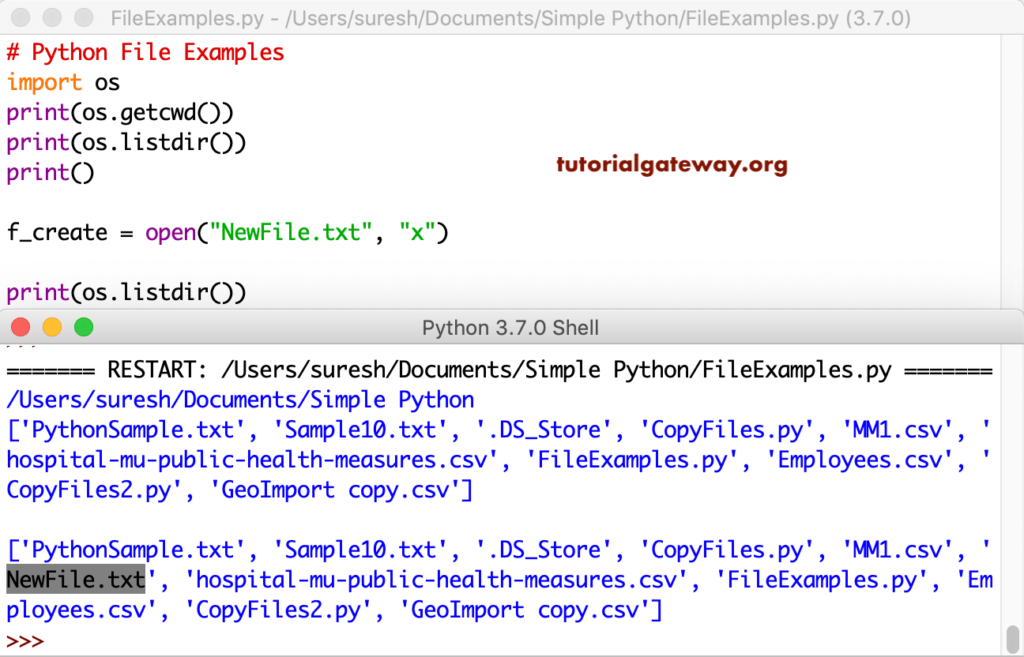

In this example, the contents of the poem are stored in the variable “myfile.”
PYTHON OPEN FILR FOR WRITING AND APPENDING WINDOWS
Running the Python file in the Windows Command Prompt.ĭata provided by the open() method is usually stored in a new variable. This should have happened automatically when you installed Python, but in case it didn’t, you may need to do it manually. Windows Users: Before you can use the python keyword in your Command Prompt, you’ll need to set up the environment variables. Run the script by navigating to the file using the Command Prompt - or Terminal - and typing ‘python’ followed by the name of the file. When it comes to reading files, Python takes care of the heaving lifting behind the scenes. The example above illustrates how using a simple loop in Python can read the contents of a file. Follow this link to learn more about what a Python comment is.

I’ve used Python comments to explain each step in the code. # reading each line of the file and printing to the console
PYTHON OPEN FILR FOR WRITING AND APPENDING CODE
I’m using the Atom code editor, which is my editor of choice for working in python. The file read.py, contains all the python code necessary to read the poem.Īny text editor can be used to write the code. Perhaps we are working on a poetry program and have our poems stored as files on the computer.īefore we can do anything with the contents of the poem file, we’ll need to tell Python to open it. The text file contains the following poem, written by poet Emily Dickinson. One is a text file named emily_dickinson.txt, and the other two are python files: read.py and write.py.

On my computer is a folder called PythonForBeginners. The filename points to the path of the file on your computer, while the file opening mode is used to tell the open() function how we plan to interact with the file.īy default, the file opening mode is set to read-only, meaning we’ll only have permission to open and examine the contents of the file. The open() function takes two arguments: a filename and a file opening mode. This is one of Python’s built-in methods, made for opening files. In Python, files are read using the open() method. In other words, they must be applications that can read and interpret binary. Because of their nature, binary files can only be processed by an application that know or understand the file’s structure. This character is useful when you don’t want to start a new line in the text itself but in the code.Ī binary file is any type of file that is not a text file. It ends the current line and tells the interpreter a new one has begun.Ī backslash character can also be used, and it tells the interpreter that the next character – following the slash – should be treated as a new line. There are several types, but the most common is the comma or newline character. This is what you know as code or syntax.Įach line is terminated with a special character, called the EOL or End of Line character. Text files are structured as a sequence of lines, where each line includes a sequence of characters. Most files are organized by keeping them in individual folders.Ī file In Python is categorized as either text or binary, and the difference between the two file types is important. That means files can be images, text documents, executables, and excel file and much more. In Windows, for example, a file can be any item manipulated, edited or created by the user/OS.

What you may know as a file is slightly different in Python. You must understand that a fileand file objectare two wholly separate – yet related – things. And the nameattribute tells you the name of the file. They can also be used to manipulate said file.įor example, the modeattribute of a file object tells you which mode a file was opened in. File objects contain methods and attributes that can be used to collect information about the file you opened. When you use the openfunction, it returns something called a file object.


 0 kommentar(er)
0 kommentar(er)
